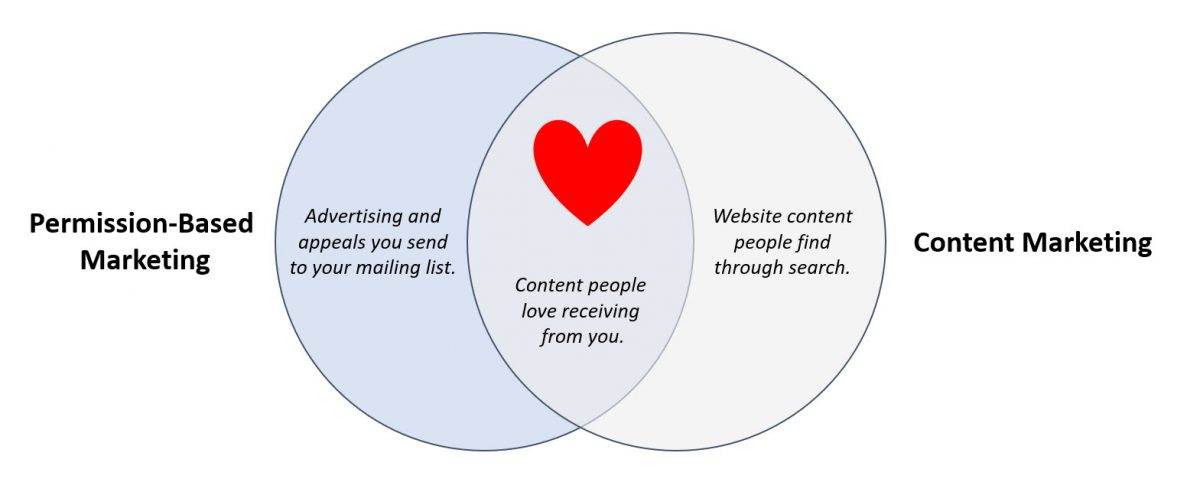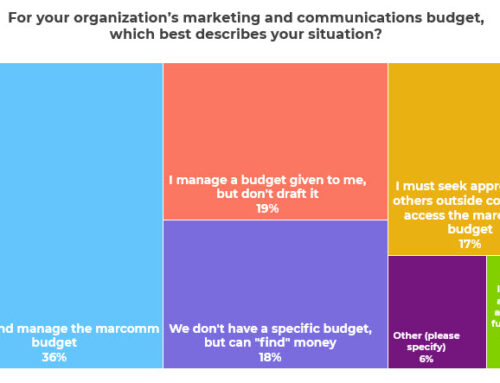Permission-Based Marketing and Content Marketing are the two most popular marketing strategies in the nonprofit sector, according to our Nonprofit Communications Trends Report research.
Many nonprofits treat them like they are the same strategies, and while they do work together and overlap a lot, they are different marketing approaches.
PERMISSION-BASED MARKETING is sharing content with specific people who have signed up, subscribed, or otherwise agreed in advance to join your mailing lists and lists of social followers. Nearly all nonprofits use this strategy in some way by building opt-in mailing lists.
CONTENT MARKETING is attracting people to your work and retaining their interest in it by creating and distributing content they find especially valuable and relevant. It’s not about pushing your messaging on them, but rather drawing them to you because they find it so valuable.
Here’s a graphic to help explain the difference and the overlap:

You can send advertising content or appeals to your opt-in email lists. That’s permission-based marketing, but not necessarily content they find especially relevant and meaningful themselves. Sending it is more in your self-interest, even though you have permission to do so.
You can also use content marketing without an opt-in mailing list. For example, when you add great content your website, people can find it and read it via search without being opted-in to any mailing list.
The sweet spot is when these two strategies work together. You send great content that keeps people on your lists, which allows you to also send them advertising or appeals.





